The Multi-Agency Gang Unit (MGU) is a mysterious multi-disciplinary police and prosecutor unit sponsored by the Shelby County (State District 30) District Attorney.
Click here for a PDF download of the above link.
 According to the DA’s website, MGU was started in 2011 and absorbed the Crime Strategies Prosecution Unit (CSPU), “incorporating and expanding the work of the Organized Crime Unit, Project Safe Neighborhood/Gundone, GunStat, the Safe Streets Task Force and the Violent Crime Unit”. It was formerly known as the DA’s Multi-Agency Gang Prosecution Unit, originally formed in 1996 as the Gang & Narcotics Prosecution Unit. Sorry about the aphabet soup, it is a direct quote from the DA’s page.
According to the DA’s website, MGU was started in 2011 and absorbed the Crime Strategies Prosecution Unit (CSPU), “incorporating and expanding the work of the Organized Crime Unit, Project Safe Neighborhood/Gundone, GunStat, the Safe Streets Task Force and the Violent Crime Unit”. It was formerly known as the DA’s Multi-Agency Gang Prosecution Unit, originally formed in 1996 as the Gang & Narcotics Prosecution Unit. Sorry about the aphabet soup, it is a direct quote from the DA’s page.
The MGU’s operating manifesto in contained in their Memorandum of Understanding signed in July 2012. An updated MOU was signed on September 12th 2016, but we have been unable to get a copy of the most recent MOU to date. We’d also like to see the minutes of recent quarterly MGU Board of Directors meetings.
“The MGU is a joint effort of six (6) primary law enforcement agencies:
- The United States Attorney for the Western District of Tennessee
- The Federal Bureau of Investigation
- The Bureau of Alcohol, Tobacco, Firearms and Explosives
- The Shelby County District Attorney General’s Office
- The Shelby County Sheriff’s Office
- The Memphis Police Department”
On the streets, MGU operatives often wear black BDU trousers, dark t-shirts with ballistic jackets, their personal choice of shoes, and an MGU patch. MPD members of MGU also have an MPD shield on the front of their vests, and drive characteristic white Dodge Chargers with police equipment but no livery. A small number of MGU operatives have no MPD shield and drive black or white SUVs with police equipment, and these are thought to be mostly sheriffs deputies, though some may be from Federal or State LE agencies. MGU headcount was recently quoted as 26 MPD officers and 21 SCSD deputies.
There is a related group known as the Organized Crime Unit. OCU’s chain of command is within MPD, but OCU works closely with MGU and other law enforcement agencies. OCU officers often wear civilian clothing and drive confiscated civilian cars. We take up the issue of MGU’s and OCU’s command structure later.
On the streets, when MGU and OCU operatives appear together in paramilitary uniforms, the main visual difference is that the OCU operatives wear their MPD shields in the same way they are worn while in plain clothes, sometimes on chains or lanyards around their necks and sometimes clipped to random spots on their ballistic jackets. The OCU ballistic vests tend to be more advanced plate carriers with steel or ceramic inserts fitted with tactical AR-15 magazine pouches, rather than the less-capable Kevlar worn by most MGU operatives. MGU operatives usually have their shields and MGU patches affixed to chest and belly area of their ballistic jackets. We have clocked regular MGU and OCU officers working together under the same command on various occasions.
MGU’s Role
The DA says that the role of MGU is totally gang-related including investigation of gang leaders and hard core members. “As a specialized unit, the MGU uses various investigative techniques and methods to conduct long term investigations.” The MOU (Memorandum of Understanding) lists seven specific areas of operation, and all of there are gang-related. There is no provision in the 2012 version of the MOU for political policing or protest-related operations.
One of the less publicized roles of MGU is to maintain a database of alleged gang members, who are not necessarily convicted of crimes. “On September 23, 2013, MGU successfully petitioned Shelby County General Sessions Court obtaining the first ever gang injunction.” This legal tool purportedly bans suspected gang members from being at designated locations. This database is thought to include 1,700 names.
Expansion of MGU and OCU’s political role.

The earliest appearance of MGU / OCU at political events was probably the Black Lives Matter protest on Hernando de Soto Bridge on July 10th, 2016. In the Commercial Appeal photo to the left, the helmeted policeman in the left of the photo has an MGU patch on his chest, while the officer second from left has the OCU favored style of ballistic vest.
A previous major protest, the Greensward sit-down of May 30th, 2016, did not have any recognizable MGU or OCU officers present. We are not sure if OCU or MGU operatives were at the two Graceland protests in the summer of 2016.
The Bridge protest was near the one-year anniversary of Darrius Stewart’s death at the hands of MPD cop Connor Schilling and was accompanied by a lot of chatter from the Fusion Centers.

In 2017, we noticed MGU appearing at numerous political events. On January 16th 2017, Martin Luther King Day, MGU and OCU police made arrests during a protest at Valero oil refinery, and those arrested were added to the City blacklist.

On Mayday, 2017, operatives with MGU belly patches performed traffic duties at the Immigration March. See photo at right.
On April 3rd, 2018, MGU and OCU officers appeared at the 201 Poplar stop of the “Rolling Block Party”. On-scene commanders designated protest leaders for arrest, and several were arrested in snatch squad operations, including journalist Manuel Duran who is thought to have been fingered by ICE for arrest. Most of the officers were wearing MPD shields but none had body cameras as required by MPD regulations. The officer who arrested Manuel Duran described himself as OCU on the arrest affidavit, and several of the operatives were wearing MGU patches. There was also an SUV with an MGU decal present, which is considered unusual as most MGU vehicles are unmarked but with obvious police equipment.
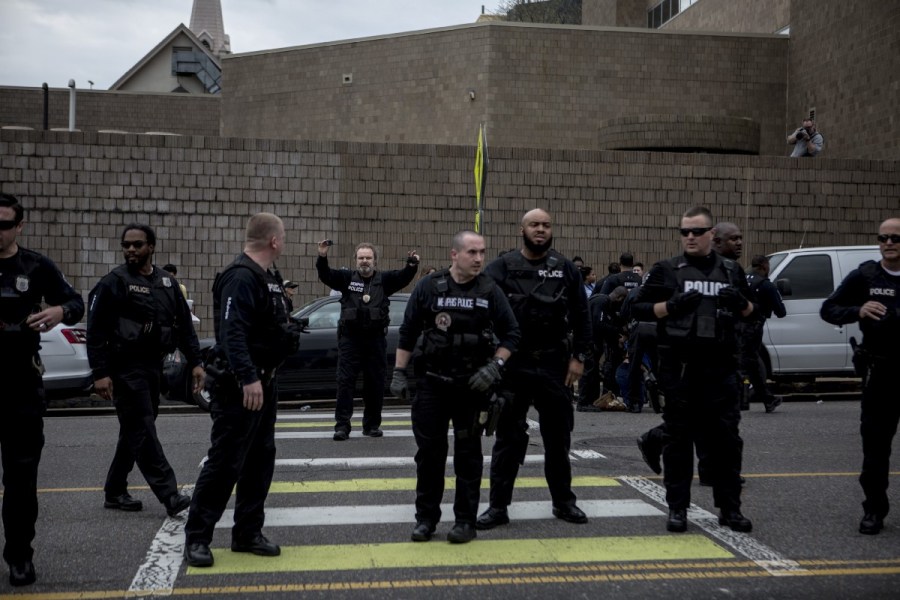

MGU and OCU officers, including at least one OCU operative, undercover in plain clothes, were seen at TakeEmDown901 protests in 2017 and 2018 and participated in arrests.
On the evening of Friday 6th July, 2018, Keedran Franklin was arrested by Organized Crime Unit detectives.

On September 19th, 2018, the day after Martavious Banks was critically wounded by MPD police, MGU operatives arrested most of the six people charged. The arresting officers identified themselves as “Task Force” in court. One protester, Hunter Demster, was pointed out for “snatch squad” style arrest by a scene commander.
The foregoing proves that MGU and OCU have been increasingly involved in aggressive policing of protests and planned snatch squad arrests.

Photographing participants are political events is forbidden by the Consent Decree and in MPD policies and procedures manual. MPD claims they don’t work with ICE, but apparently MGU does. Daniel Connolly of the Commercial Appeal documents an MGU operative who identified himself as an ICE officer. MGU is also a means for MPD to deceive the public on its policies. In this 2017 Channel 5 article, Mike Rallings claims that they don’t work with ICE except when called to an incident. MPD and ICE operatives were operating jointly in MGU at the time Rallings made this statement.
Personnel
MGU is headed by Amy Weirich in her capacity as MGU Board of Directors Chair, and she is addressed and referred to as General Weirich in MGU documents. This suggests that the MPD officers in MGU are outside the MPD chain of command.
The Board also includes ex-officio the heads of the six agencies listed in the MOU.
MGU Operational Commander is MPD Major Darren M. Goods, who earns over $81K.
Other identified MGU members include: ATF SAC Chris Rogers, MPD’s Detective Dennis Evans Jr. ($60K), SCSO Detective David McGriff Jr., ADA Chris Scruggs, Detective A. Taylor, MPD Lieut. Michael Juan Rosario ($71K), MPD Sgt. Mahajj Abdul-Baaqee ($65K), MPD Clarence Muhammad ($60K), MPD Sgt. Brian Alan Beasley (65K), Det. Doty, Det. Fernandez, Det. Stewart, ADA Paul Hagerman, Amy Weirich’s deputy, David Biggers Jr. of the Tenn. Western District federal prosecutors office, D. Michael Dunavant (US Prosecutor), Ed Stanton Jr (clocked in 2016 when he was Federal Prosecutor and who has a conflict of interest in the current context), Neal Oldham (US Prosecutor), ADA Colin Campbell and ADA Ray Lepone, who have been clocked at MGU functions in recent years.
According to the Sheriff’s Office, “MGU is led by Resident Agent in Charge Marcos Bess of the ATF along with Lieutenant Kenny Roberson of the Shelby County Sheriff’s Office and Major Darren Goods of the Memphis Police Department.”
Consent Decree Section I
I: Restriction on Joint Operations
The defendants and the City of Memphis shall not encourage, cooperate with, delegate, employ or contract with, or act at the behest of, any local, state, federal or private agency, or any person, to plan or conduct any investigation, activity or conduct prohibited by this Decree.
On 11/13/2019, the Court issued two orders, one to release the transcript of the August 27, 2019 in-camera conference, and the second to deny the City’s motion to rescind some of the restrictions in Section I. The actual transcript has not been released on PACER, the Federal Court docket system, as of the time of writing. These orders are taken as the Court’s re-affirmation of Section I and the Consent Decree as a whole.
The MGU has its own database, independent of MPD’s regular database. This database has the capability of tracking political intel. MGU operatives are instructed to create an index number for the MGU database and a separate number for their own agency database, for all reports. MPD members, while seconded to the MGU, do not have to follow MPD’s body camera regulations and do not follow MPD’s regulations in regard to the Consent Decree.
The Marshall Project recently wrote about six local police departments, including Atlanta’s, which have pulled out of joint Task Forces, because the task forces are not bound by local police regulations.
MGU is secretive in nature and has sophisticated intelligence gathering tools and an independent database outside MPD’s control. As long as MPD is part of the MGU/OCU it will be impossible to obtain or confirm compliance with the Consent Decree, regulations on photographing police or other MPD rules.
Organized Crime Unit (OCU)
The MGU as previously described have an occluded chain of command. In the MGU, officers report to General Amy Weirich through the MGU hierarchy, they are deputized to a Federal agency and they also report to their own agency. FBI rules mandate that all task force members are deputized to a Federal agency specifically to comply with FBI rules forbidding body cams, and to avoid other local LE regulations, including consent decrees.
MGU’s headquarters is at 3657 Old Getwell. They have also scheduled meetings at 994 South Bellevue, a mysterious industrial bunker-like building owned by the County.
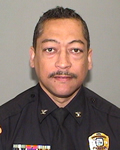
OCU, on the other hand, has a clear chain of command at MPD. OCU is run by Precinct Commander Colonel Marcus Worthy who reports to MPD Deputy Chief of Special Ops Michael Hardy. The Special Ops division includes the TACT squad and the Real Time Crime Center.
According to the Sheriff’s Office, OCU is a part of MGU.
OCU’s headquarters is at 225 Channel 3 Drive, and, unlike MGU headquarters, the address is not secret. They even publish their phone number: (901) 528-2338.
According to local lore, OCU officers are bumped a rank on entry and there are no operational officers below the rank of sergeant. Supervisory level OCU staff are lieutenants or above.
OCU has a siilar role at political events as MGU, and the two units have been observed to work closely together at political events. In court, both OCU and MGU officers tend to give their unit as “Task Force”, which is vague.
“The Organized Crime Unit of the Memphis Police Department is assigned the primary responsibility for investigative and control of organized crime, vice, and narcotics related offenses within the Department’s jurisdiction. The Unit is multi-faceted and actively participates in multijurisdictional task forces to coordinate the attack on illegal activities at the local, state, and federal levels.” (MPD 2014 Annual Report)
This statement is misleading. OCU does not have primary responsibility for those areas due to the mission overlap with MGU. OCU’s role on the MPD website does not include the policing of political events or the snatch-squad, politically directed, arrests of dissidents. The multijurisdictional task force mention appears to include both their joint operations and integration with MGU and also working with Federal LE agencies, who routinely deputize local LE personnel for the reasons outlined above.
It is clear, like when MPD officers are deputized to the MGU, the role of OCU in MGU or any other task forces that include Federal deputization require them to ignore MPD regulations, including the Consent Decree where they conflict with Federal guidelines.
Conclusion
MPD cannot participate in MGU, under the leadership of General Weirich, and while deputized to Federal agencies, and be compliant with Section I. Their recent history demonstrates frequent non-compliance with the Consent Decree. General Weirich is a State employee and not subject to the Consent Decree.
OCU could come into compliance with Section I, because it has a clear chain of command within MPD, but only insofar as it does not engage in the MGU or any task force which requires its members to be deputized to Federal agencies. Its commanders and members need to be trained in how to comply with Section I of the Consent Decree and its other requirements.
The City will say that not being able to engage in task forces will cramp its style, but the Marshall report shows that six cities have managed to achieve this, and the sky did not fall.
To be continued.






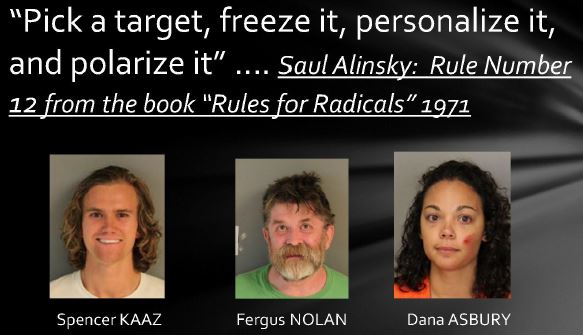


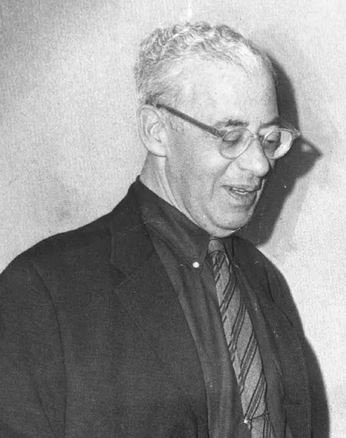


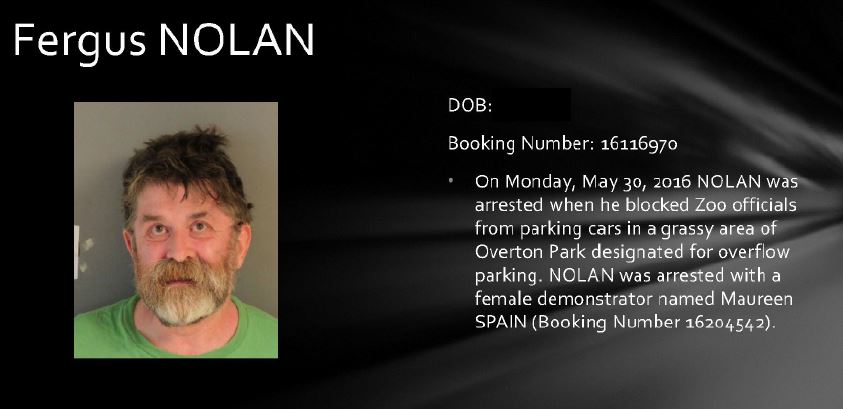





 Bob Smith friended me in May 2016. After the May 30th arrests, the Park Protector groups were in uproar and many of them wanted more direct action. As admin of “The Fringe Element”, I was worried about some people, including Bob Smith, who were openly advocating more direct action. Not wanting to have people planning things in an open group, I created a secret Facebook group on June 5th entitled “Kessler Associates” and added Bob Smith and about six other people to the group.
Bob Smith friended me in May 2016. After the May 30th arrests, the Park Protector groups were in uproar and many of them wanted more direct action. As admin of “The Fringe Element”, I was worried about some people, including Bob Smith, who were openly advocating more direct action. Not wanting to have people planning things in an open group, I created a secret Facebook group on June 5th entitled “Kessler Associates” and added Bob Smith and about six other people to the group.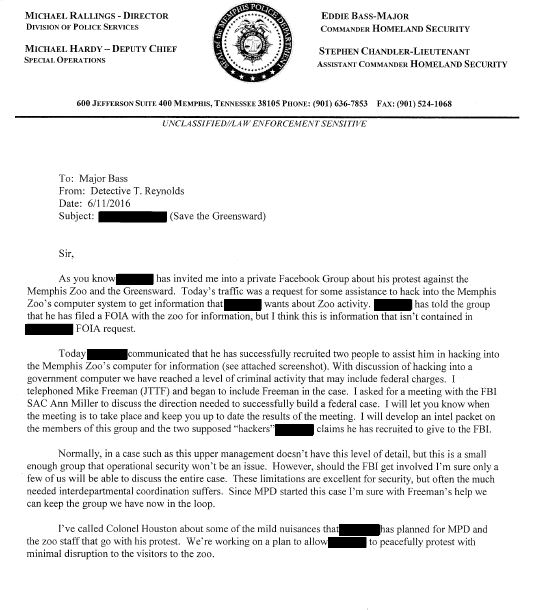









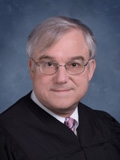
 Our June award winner is Judge Chris Craft, Shelby Criminal Court Division VIII. We outline his bio towards the end of this piece, but right now we’re going to jump into why Craft gets the Hammer Award.
Our June award winner is Judge Chris Craft, Shelby Criminal Court Division VIII. We outline his bio towards the end of this piece, but right now we’re going to jump into why Craft gets the Hammer Award.



 “April 10th, 2019 – An attorney believed to be representing the defendant pointed his finger at her and said, “Keep quiet!” as she was attempting to speak to Judge Craft and request a new attorney. When it came time for her case, the defendant wanted to be heard. After her attorney painted her as mentally incompetent, Judge Craft let her speak. She explained that there had been no communication between her and her attorney, and that she’s being ignored. As you can imagine, this is her only opportunity to advocate for herself — particularly since her attorney wasn’t. She had a difficult time staying quiet, but was never disrespectful in my opinion. After Judge Craft heard her out, there was more she wanted to say. However Judge Craft appeared annoyed at this point and said, “I’ll give you 10 days in jail for every word you say”. The defendant was quiet.”
“April 10th, 2019 – An attorney believed to be representing the defendant pointed his finger at her and said, “Keep quiet!” as she was attempting to speak to Judge Craft and request a new attorney. When it came time for her case, the defendant wanted to be heard. After her attorney painted her as mentally incompetent, Judge Craft let her speak. She explained that there had been no communication between her and her attorney, and that she’s being ignored. As you can imagine, this is her only opportunity to advocate for herself — particularly since her attorney wasn’t. She had a difficult time staying quiet, but was never disrespectful in my opinion. After Judge Craft heard her out, there was more she wanted to say. However Judge Craft appeared annoyed at this point and said, “I’ll give you 10 days in jail for every word you say”. The defendant was quiet.”
 We commend Mr Connolly’s enterprise and, seeing that we have
We commend Mr Connolly’s enterprise and, seeing that we have 

 Our piece on
Our piece on  The
The 








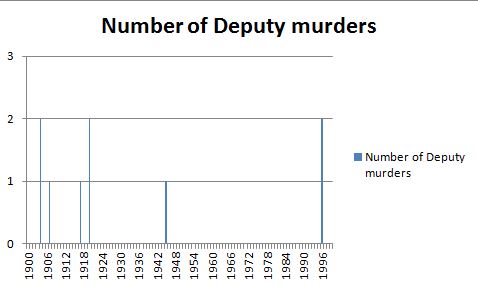 We can calculate some probabilities. The probability of a deputy being killed in any given year, P(A) is 9/100 or 0.9. The probability of a second murder, P(B|A) in a given year is 8/100, because one of the murders is already counted. The probability of two deputy murders in the same year, by
We can calculate some probabilities. The probability of a deputy being killed in any given year, P(A) is 9/100 or 0.9. The probability of a second murder, P(B|A) in a given year is 8/100, because one of the murders is already counted. The probability of two deputy murders in the same year, by 


